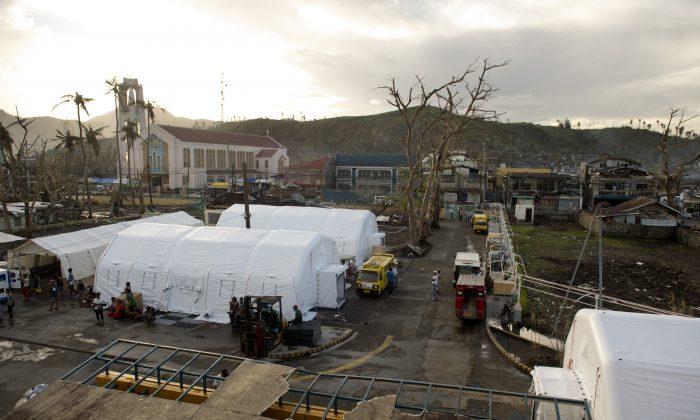The earthquake in Nepal has left thousands dead, and tens of thousands injured, flooding local hospitals with patients, leaving facilities overwhelmed. Doctors Without Borders (MSF), which specializes in emergency humanitarian aid, has already sent squads of surgeons to Nepal.
While the doctors themselves are mobile, medical facilities are more difficult to transport—doctors often have to settle for makeshift tents, with all the concomitant sanitary issues.
Fortunately, MSF has a secret weapon for these scenarios—inflatable hospitals.
After seeing them developed for the Italian army in 2004, MSF decided to add inflatable hospitals to its own arsenal of supplies, and has since deployed them in earthquake-stricken Pakistan and Haiti.
On April 30, three 100-square meter (1076-square-foot) inflatable tents and medical supplies, totaling 38.5 tons, were dropped off in Kathmandu.
The facility has 56 beds and polyvinyl chloride walls to ensure a sealed, sterile environment. The tent takes around 2–3 days to set up, and is fully operational after being hooked up to electricity and water.
https://www.youtube.com/watch?v=kkhGTQhVMKo
Currently, the hospital in the process of being set up in Gorkha, near the epicenter of the earthquake, only has the essentials—operating room, an emergency room, and a recovery room—but additional chambers, such as an outpatient room, could be added if more supplies are flown in.
“We will increase the number of clinics as quickly as possible,” said Dr. Prince Mathew, according to MSF. “Our teams also plan to distribute tonnes of shelters, hygiene materials, and cooking equipment. With the monsoon season approaching, we’re worried that the window of opportunity to reach people in these areas is rapidly closing.”
The earthquake has created ruptures in the surface terrain of Nepal, which makes the country even more vulnerable to often fatal landslides and mudslides, which are triggered by the rain, that already plague the country in normal years.
With the help of satellite data, many areas have been marked as landslide hotspots and will need to be evacuated in the coming months.
The earthquake has claimed more than 7,000 lives so far, and some experts claim that the final death count could be in the tens of thousands.






